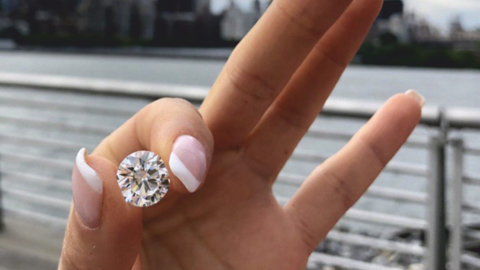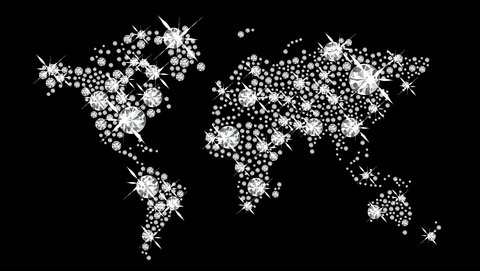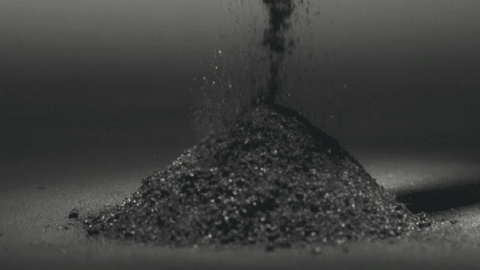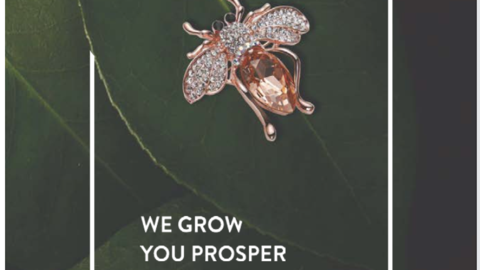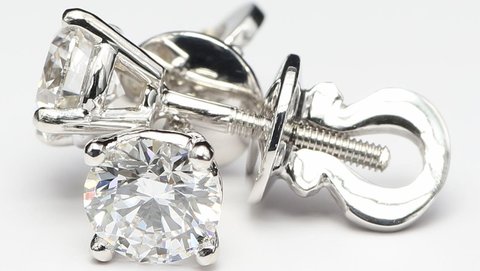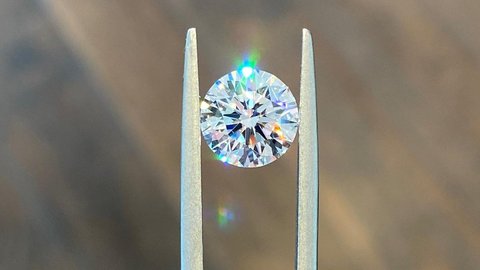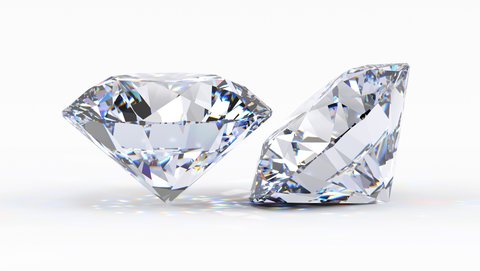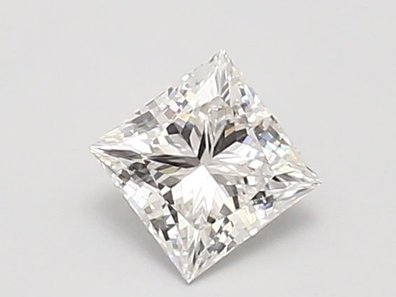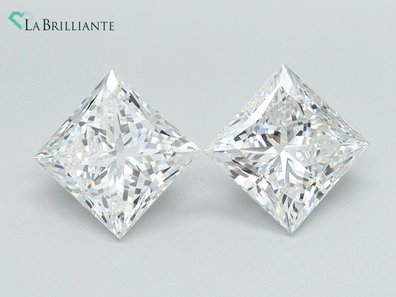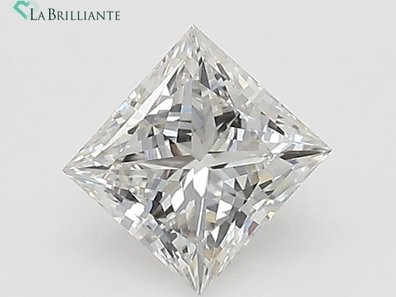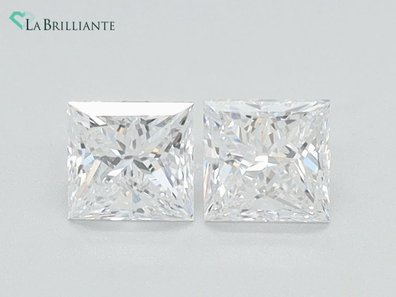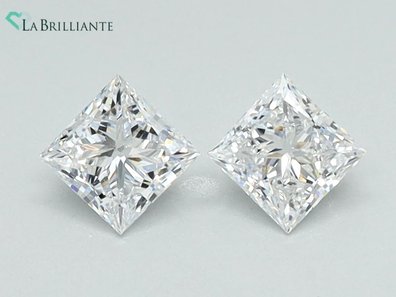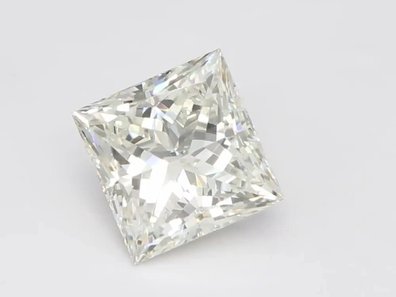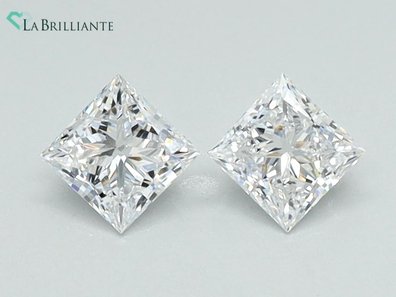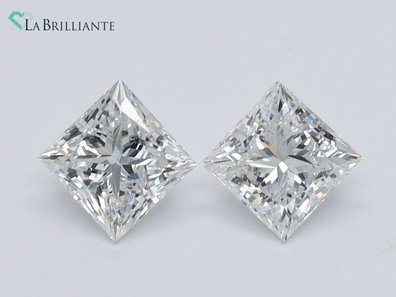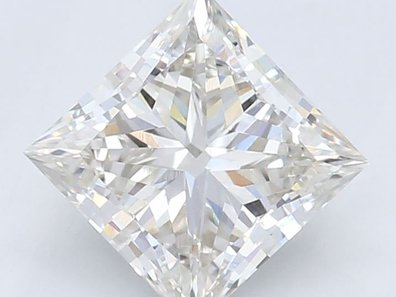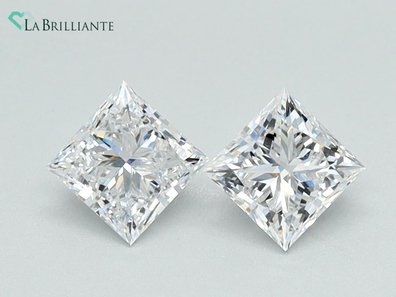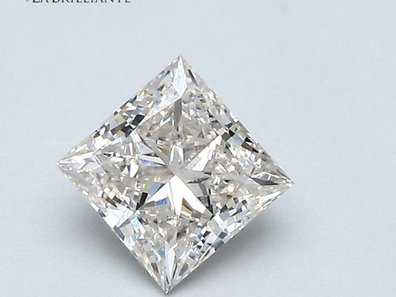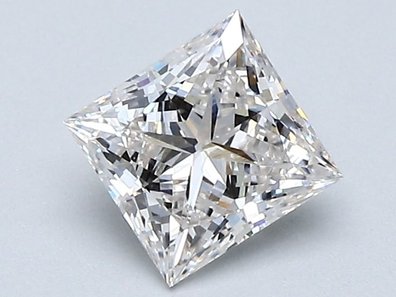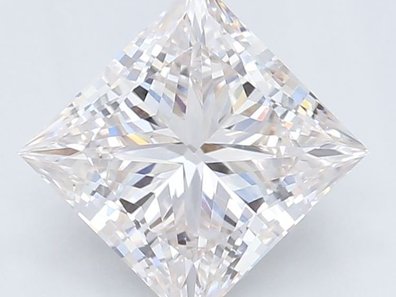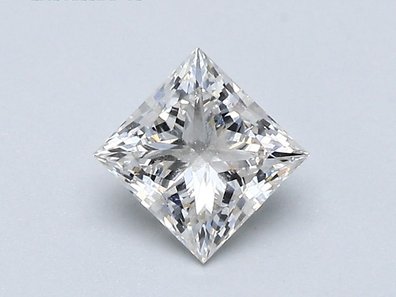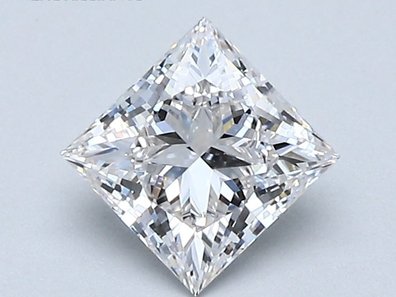Princess Cut Lab Grown Diamonds
Princess cut lab-grown diamonds are highly demanded due to their versatility, durability and high brilliance. They also offer a unique appearance and are cost-effective compared to other diamond cuts, making them a popular choice for engagement rings and other jewelry.
The process of creating a princess cut lab-created diamond begins with selecting a rough diamond and determining the best orientation for cutting. The rough diamond is then cut into a square shape using specialized cutting machines and cut to specific angles to maximize brilliance. The diamond's surface is then faceted and polished to create the traditional princess cut pattern. The finished diamond is then inspected and certified for quality.
Explore our Princess Cut Diamond Buying Guide
Need a Particular Lab-Grown Diamond?
Please describe your requirement in the form below and we will contact you within 24 hours with the best available options.
Get Access to Our Lab Diamond Database
Find Out About Prices and Availability Information
Some of Our Princess Lab-Grown Diamonds
Are you a diamond buyer?
Please sign in on our website, and we will grant you access to over 100,000 lab-grown diamonds in our stock.
Princess Cut Diamond Proportions
| SIZE | CARAT WEIGHT | SIZE | CARAT WEIGHT | SIZE | CARAT WEIGHT |
| 1.5 mm | 0.0015 ct. | 4.75 mm | 0.64 ct. | 8 mm | 3.00 ct. |
| 1.75 mm | 0.03 ct. | 5 mm | 0.75 ct. | 8.25 mm | 3.24 ct. |
| 2 mm | 0.06 ct. | 5.25 mm | 0.90 ct. | 8.5 mm | 3.67 ct. |
| 2.25 mm | 0.08 ct. | 5.5 mm | 1.00 ct. | 8.75 mm | 4.10 ct. |
| 2.5 mm | 0.10 ct. | 5.75 mm | 1.11 ct. | 9 mm | 4.12 ct. |
| 2.75 mm | 0.13 ct. | 6 mm | 1.25 ct. | 9.5 mm | 5.09 ct. |
| 3 mm | 0.18 ct. | 6.25 mm | 1.39 ct. | 9.75 mm | 5.36 ct. |
| 3.25 mm | 0.26 ct. | 6.5 mm | 1.50 ct. | 10 mm | 5.62 ct. |
| 3.5 mm | 0.29 ct. | 6.75 mm | 1.75 ct. | 10.25 mm | 5.76 ct. |
| 3.75 mm | 0.31 ct. | 7 mm | 2.00 ct. | 10.5 mm | 5.99 ct. |
| 4 mm | 0.39 ct. | 7.25 mm | 2.01 ct. | 11 mm | 7.44 ct. |
| 4.25 mm | 0.44 ct. | 7.5 mm | 2.50 ct. | 11.5 mm | 9.44 ct. |
| 4.5 mm | 0.50 ct. | 7.75 mm | 2.74 ct. | 12 mm | 9.52 ct. |
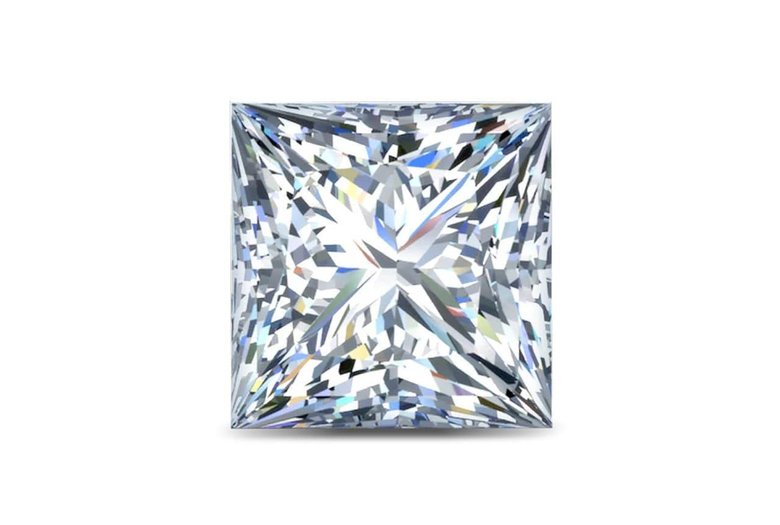
How to Choose The Perfect Princess Cut Lab-Grown Diamond?
To achieve a stunning appearance and maximize the play of light in a princess cut lab-grown diamond, it's crucial for the diamond's sides to be uniform, and its facets should be symmetrical. Any excess or missing facets can disrupt the way light reflects within the diamond. In a diamond with an excellent cut, the left and right halves match precisely, and all the facet points align perfectly.
For those seeking an affordable option, selecting a diamond with an SI2 clarity grade can be a wise choice. If the diamond is larger, opting for an SI1-VS2 clarity grade is a better option.
Color imperfections become more noticeable in larger gemstones, just like in round lab diamonds. Choosing a lower color grade like I can be a money-saving choice for lab-created diamonds under 1 carat. However, it's advisable to seek a higher color grade for larger diamonds to avoid any yellowish hues.
Technical Aspects of Princess Cut Diamonds
The princess cut diamond was first invented by Arpad Nagy in 1980. Nagy, a diamond cutter and polisher, was searching for a way to maximize the potential of rough diamonds, and he developed a new cutting technique that resulted in a square or rectangular diamond with a high level of brilliance. The princess cut diamond is also known as the "square modified brilliant" or "barion cut" named after Nagy's friend, Basil Watermeyer, who helped him to develop and promote the cut.
It was a significant breakthrough in diamond cutting, as it allowed diamond cutters to retain more of the rough diamond's weight, resulting in a more cost-effective option for consumers. Nagy's new cutting technique also resulted in a diamond that had a unique and striking appearance, which quickly caught the attention of the diamond industry and consumers alike.
Princess cut lab-grown diamonds became popular due to their unique appearance and high level of sparkle. They are also versatile and can be used in a variety of jewelry settings, from solitaire to three-stone rings, making them ideal for engagement rings and other special occasion jewelry. The princess cut shape is now one of the most popular diamond cuts and it is widely used in the diamond industry.
LaBrilliante as a manufacturer of princess cut lab-grown diamonds of top-notch quality, offer an environmentally friendly and sustainable alternative to mined diamonds, and our princess cut lab-grown diamonds are quickly becoming a popular choice among customers looking for a unique and high-quality option.
How to Buy Princess Lab Diamonds Wholesale?
Simplify your wholesale lab-grown diamond purchase with Labrilliante. Choose between submitting an online application or contacting us directly through the provided phone number. Our managers are ready to assist you in finding the perfect princess cut diamond that caters to your preferences and requirements.
Labrilliante for You
Making our customers happy since 2014.
Labrilliante is a manufacturer and wholesaler of lab-grown diamonds in the USA. We stand as a reliable partner due to our extensive inventory of lab stones, capable of satisfying diverse needs.
We provide the option to choose diamonds in any shape, size, and color. We also offer flexible payment terms, direct wholesale prices from the manufacturer of lab-created diamonds, free shipping, personal assistance, and 24/7 support. Our brand values personal recommendations and firsthand experiences.
Frequently Asked Questions: Princess Cut Lab Grown Diamonds
Princess cut lab grown diamonds are square-shaped diamonds created in laboratory settings that feature a unique appearance with beveled sides and high brilliance. They have the same chemical, physical, and optical properties as natural princess cut diamonds but are produced through controlled processes like HPHT (High Pressure High Temperature) or CVD (Chemical Vapor Deposition)
Princess cut lab grown diamonds are chemically and physically identical to natural diamonds, with the same hardness, brilliance, and fire. The only difference is their origin - lab diamonds are created in controlled environments while natural diamonds form in the Earth. They are graded using the same 4Cs criteria (cut, color, clarity, and carat weight)
Yes, princess cut lab grown diamonds typically cost significantly less than natural diamonds of comparable quality and size. This price advantage allows you to choose a larger or higher-quality diamond within the same budget without compromising on beauty or brilliance
Princess cut diamonds were invented by Arpad Nagy in 1980. Nagy, a diamond cutter and polisher, developed this cutting technique to maximize the potential of rough diamonds. The cut (also known as "square modified brilliant" or "barion cut") was revolutionary because it allowed cutters to retain more of the rough diamond's weight, making it more cost-effective while creating a unique and striking appearance with high sparkle
For princess cut lab grown diamonds under 1 carat, an SI2 clarity grade and a lower color grade like I can be cost-effective choices without compromising appearance. For larger stones, it's advisable to select SI1-VS2 clarity and a higher color grade to avoid visible inclusions and yellowish hues that become more noticeable in larger gemstones
The stunning appearance of a princess cut lab diamond depends on uniform sides and symmetrical facets. Any excess or missing facets can disrupt light reflection within the diamond. In an excellent cut, the left and right halves match precisely, and all facet points align perfectly, maximizing the play of light and creating optimal brilliance
Princess cut lab diamonds follow a consistent size-to-weight ratio. For example, a 5.5 mm princess cut equals approximately 1.00 carat, a 6.5 mm equals 1.50 carats, and a 7 mm equals 2.00 carats. This measurement-to-weight correlation helps when selecting a diamond of your desired size
Yes, princess cut lab grown diamonds can be reset or modified just like natural diamonds. Whether you want to upgrade your setting, repurpose your diamond into a new piece, or adjust the size of your ring, a professional jeweler can easily make these changes. Lab grown diamonds are equally durable as natural diamonds, making them versatile for all types of jewelry modifications


